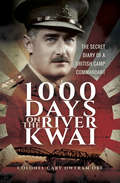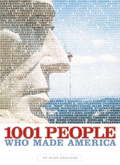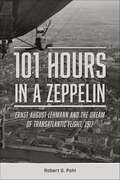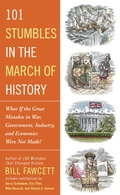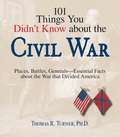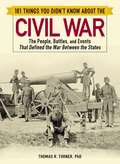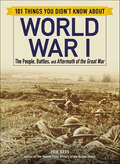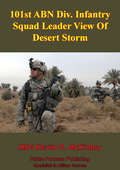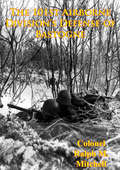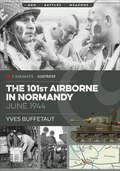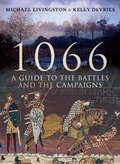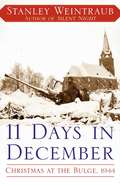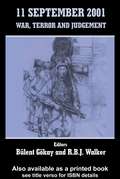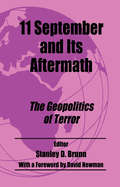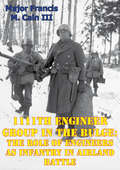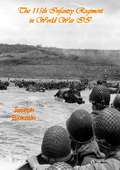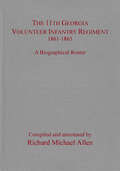- Table View
- List View
1000 Days on the River Kwai: The Secret Diary of a British Camp Commandant
by Colonel Cary OwtramA British officer recounts his harrowing years as a POW in Thailand, including his time as the camp commandant, in this WWII memoir.Colonel Cary Owtram served with the 137th Field Regiment, Royal Artillery, and the 11th Indian Infantry Division in Malaysia. After being captured by the Japanese in Singapore, he was transported to the infamous Burma railway. He went on to spend the next three and a half years in grueling captivity in Thailand, first in Ban Pong Camp and then Chungkai Camp—one of the largest POW camps in the region. Owtram was appointed the British Camp Commandant at Chungkai, making him responsible for his fellow prisoners—a heavy responsibility added to the general deprivation and hardship suffered by all. During that time, Owtram kept a secret diary in which he recorded the brutal experience of surviving day to day and attempting to deal with their harsh and unpredictable Japanese captors. It is not only the prisoners who suffered, but also their families at home. The postscript by Owtram’s daughters vividly demonstrates the agonies of doubt and worry that loved ones went through and the effect of the experience on all.
1001 Nights in Iraq
by Shant KenderianShant Kenderian's visit to Baghdad in 1980, at age seventeen, was supposed to be a short one -- just enough time to make peace with his estranged father before returning to his home in the United States. But then Saddam Hussein invaded Iran and sealed off Iraq's borders to every man of military age -- including Shant. Suddenly forced onto the front lines, his two-week visit turned into a nightmare that lasted for ten years. 1001 Nights in Iraq presents a human story that provides unique insight into a country and culture that we only get a hint of in the headlines. After surviving the horrors of the Iran-Iraq War, Shant was then forced to fight on the front lines of Desert Storm without being given the proper equipment, including a gun, but miraculously survived to be captured by the Americans and become a POW. He underwent starvation, heavy interrogations, and solitary confinement, but what broke him in the end was his love affair with a female American soldier. Yet throughout this whole ordeal, Shant never lost his respect for people, his faith in God, or his sense of humor.
1001 People Who Made America
by Alan AxelrodIn this companion to his popular 1001 Events That Made America, Alan Axelrod suggests we can answer this question only after we look with an open mind into all the areas of our collective past. 1001 People Who Made America does just that, highlighting the famous as well as the infamous, the virtuous as well as the notorious, from the nation's earliest days to the present. Serving up history in lively, accessible bits, the book presents a who's who?
1001 Things to Love About Military Life
by Starlett Henderson Holly Scherer Tara Crooks Kathie HightowerA first-of-its-kind celebration of military life, 1001 THINGS TO LOVE ABOUT MILITARY LIFE chronicles some obvious and not-so-obvious traditions, advantages and experiences military members, veterans and their families share.Full of heart-warming vignettes, laugh-out-loud lists, stories and quotes from military members and family members, and photos that speak a thousand positive affirmations, this inspirational look at those who dedicate their lives to serving perfectly illustrates why it is a profession and lifestyle to love.You'll find practical truths most service members wouldn't want to live without and learn the unique outlooks, services and advantages military life provides. Military or civilian, you'll experience the community and personal growth that the military offers.Whether you have a friend or loved one in the military, you're a service member ready to head out on duty, a spouse gearing up to take charge of the household, a veteran in need of a few good laughs, or a new recruit looking for encouragement, this book provides inspiration and insight into the lives of today's dedicated and courageous military families.
101 Hours in a Zeppelin: Ernst August Lehmann and the Dream of Transatlantic Flight, 1917
by Robert S. PohlThe Robert Wichard Pohl letters, which are the basis of this book, have never before been translated or published.Pohl provides a rare personal account of life aboard a WWI airshipThis was the first flight to exceed 100 hours, and to prove that Zeppelins were, indeed, capable of flying across the Atlantic Ocean.
101 Stumbles in the March of History: What If the Great Mistakes in War, Government, Industry, and Economics Were Not Made?
by Bill FawcettAn all-new compendium of 101 historic screw-ups from the author of 100 Mistakes that Changed History. DID I DO THAT??? When asked to name a successor, Alexander the Great declared that his empire should go "to the strongest". . . but would rival factions have descended into war if he'd been a little more specific? What if the Vienna Academy of Art took a chance on a hopeful young student named Adolf Hitler? If Pope Clement VII granted King Henry VIII an annulment, England would likely still be Catholic today--and so would America. Bill Fawcett, author of 100 Mistakes That Changed History, offers a compendium of 101 all-new mammoth mistakes--from the ill-fated rule of Emperor Darius III to the equally ill-fated search for WMDs in Iraq--that will, unfortunately, never be forgotten by history.From the Trade Paperback edition.
101 Things You Didn't Know About The Civil War: Places, Battles, Generals--Essential Facts About the War That Divided America
by Thomas TurnerThe Lowdown on America's Bloodiest War!Do you know:The name of the first state to secede from the Union?The individual who could be considered the Mata Hari of the Civil War?The Bible passage Southerners used most often to justify slavery?You'll find answers to these intriguing questions and more in 101 Things You Didn't Know about the Civil War. Packed with fascinating details about the people, places, and events that defined our nations most contentious conflict, this tell-all guide reveals the inside scoop on the:Issue of slavery and its impact on the warGreat-and not-so-great-leaders and generalsBattles fought and lost-and fought againParticular horrors of this warWomen, children, and African Americans in the warComplete with a helpful timeline, 101 Things You Didn't Know about the Civil War is your go-to guide for facts of the war that dramatically altered the course of American history.
101 Things You Didn't Know about the Civil War: The People, Battles, and Events That Defined the War Between the States (101 Things)
by Thomas TurnerGet the lowdown on America’s Bloodiest War—the Civil War—with this essential guide to 101 interesting and unexpected facts about this defining event in US history. Do you know which state first seceded from the Union? What about the individual who could be considered the Mata Hari of the Civil War? Or how about which Bible passage Southerners used to justify slavery? You’ll find answers to these questions and many, many more in 101 Things You Didn’t Know about the Civil War. Packed with fascinating details about the people, places, and events that defined our nation’s most contentious conflict, this tell-all guide reveals the inside scoop on slavery and its impact on the war; great—and not-so-great—leaders and generals; battles fought and lost—and fought again; some of the most shocking horrors of the war; women, children, and African Americans in the war. Complete with a helpful timeline, 101 Things You Didn’t Know about the Civil War is your go-to guide for little-known facts about the war that dramatically altered the course of American history forever.
101 Things You Didn't Know about World War I: The People, Battles, and Aftermath of the Great War (101 Things Ser.)
by Erik SassIn honor of the 100th anniversary of the end of World War I, here are 101 little-known and fascinating facts about its history. In this informative, accessible look at World War I, you'll find a complete overview of this critical historical event, its long-standing impact, and little-known facts. Identify the important figures, discover what everyday life was like during wartime, and learn about the inventions and momentous events from the Great War that changed history forever. Whether you&’re seeking a basic, academic introduction or looking for interesting new facts to expand your knowledge, you&’re sure to find it in 101 Things You Didn&’t Know about World War I.
101st ABN Div. Infantry Squad Leader View Of Desert Storm (Eyewitness To Modern War #6)
by MSG Kevin D. McKinleyThis paper will provide a historical view of the events of 1st Squad, 1st Platoon of Bravo Company, 2/187th Infantry BN, 101st ABN Division, Fort Campbell, KY. I will provide insight of the operation from the squad level non-commissioned officer view. I will focus on the areas of notification of deployment, pre deployment preparation, deployment, Operation Desert Shield, Operation Desert Storm, cease-fire, and redeployment to Fort Campbell. The paper will cover the period of 01 August 1990 through 09 April 1991.
The 101st Airborne Division’s Defense Of Bastogne [Illustrated Edition]
by Colonel Ralph M. Mitchell[Includes 53 photos/illustrations and 11 maps]The defense of Bastogne during the Battle of the Bulge in World War II is one of the supreme achievements of American arms. Bastogne is deservedly identified with the finest characteristics of the American soldier, and the name Bastogne symbolizes a heroic battle. Bastogne has long held the attention of students of war, yet the battle offers new insights for soldiers with modern concerns.Colonel Ralph M. Mitchell's study, The 101st Airborne Division's Defense of Bastogne, reveals how a light infantry division, complemented by key attachments, stopped an armor-heavy German corps. Using original documents and reports, Colonel Mitchell traces the fight at Bastogne with emphasis on the organization, movement and, employment of the 101st Airborne Division. Although a variety of factors influenced the outcome at Bastogne, the flexibility of the 101st to reconfigure for sustained operations and to defeat strong opposition forces even when surrounded shows how properly augmented light infantry can fight and win.
101st Airborne in Normandy: June 1944 (Casemate Illustrated #1)
by Yves Buffetaut101st Airborne Division was activated in August 1942 in Louisiana, and its first combat mission was Operation Overlord. On D-Day—June 6, 1944—101st and 82nd Airborne dropped onto the Cotentin peninsula hours before the landings, tasked with capturing bridges and positions, taking out German strongpoints and batteries, and securing the exits from Utah and Omaha Beaches. Things did not initially go smoothly for 101st Airborne, with cloud and antiaircraft fire disrupting the drops resulting in some units landing scattered over a large area outside their designated drop zones and having to waste time assembling—stymied by lost or damaged radio equipment—or trying to achieve their objectives with severely reduced numbers. Casualties were high in some areas due to heavy pre-registered German fire. Nevertheless, the paratroopers fought on and they did manage to secure the crucial beach exits, even if they only achieved a tenuous hold on some other positions. A few days later, 101st Airborne were tasked with attacking the German-held city of Carentan as part of the consolidation of the US beachheads and establishment of a defensive line against the anticipated German counteroffensive. The 101st forced their way into Carentan on 10 and 11 June. The Germans withdrew the following day, and a counteroffensive was put down by elements of the 2nd Armored Division. This fully illustrated book details the planning of the airborne element of D-Day, and the execution of the plans until the troops were withdrawn to prepare for the next big airborne operation, Market Garden.
1066: A Guide to the Battles and the Campaigns
by Michael Livingston Kelly DeVriesAn illustrated history and guide to the Battle of Hastings by two leading medieval military historians. The Battle of Hastings, fought on 14 October 1066, changed the course of English history. This most famous moment of the Norman Conquest was recorded in graphic detail in the threads of the Bayeux Tapestry, providing a priceless glimpse into a brutal conflict.In this fresh look at the battle and its surrounding campaigns, leading medieval military historians Michael Livingston and Kelly DeVries combine the imagery of the tapestry with the latest modern investigative research to reveal the story of Hastings as it has never been told and guide visitors around the battlefield today.This absorbing new account of the battle will be fascinating reading for anyone keen to find out what really happened in 1066: the journeys by which Harold Godwinson and William of Normandy came to the battlefield, and the latest reconstructions of the course of the fighting on that momentous day. It is also a practical, easy-to-use guide for visitors to the sites associated with the conquest as well as the Hastings battlefield itself.This is essential reading and reference for anyone interested in the battle and the Norman Conquest.“The writing is concise, with many side bars to identify people, explain technical terms, and so forth, and each chapter ends with a recommended tour route. A very good book for anyone who knows little about the conquest, and one which even those well up on the subject may find interesting.” —The NYMAS Review“Followers of Bernard Cornwell’s Dark Ages series, The Last Kingdom, will be absolutely fascinated by Michael and Kelly's book, which fast forwards just a few years to the conquest of England by the Normans. Superbly illustrated.” —Books Monthly
1066: A Guide to the Battles and the Campaigns
by Michael Livingston Kelly DeVriesAn illustrated history and guide to the Battle of Hastings by two leading medieval military historians. The Battle of Hastings, fought on 14 October 1066, changed the course of English history. This most famous moment of the Norman Conquest was recorded in graphic detail in the threads of the Bayeux Tapestry, providing a priceless glimpse into a brutal conflict.In this fresh look at the battle and its surrounding campaigns, leading medieval military historians Michael Livingston and Kelly DeVries combine the imagery of the tapestry with the latest modern investigative research to reveal the story of Hastings as it has never been told and guide visitors around the battlefield today.This absorbing new account of the battle will be fascinating reading for anyone keen to find out what really happened in 1066: the journeys by which Harold Godwinson and William of Normandy came to the battlefield, and the latest reconstructions of the course of the fighting on that momentous day. It is also a practical, easy-to-use guide for visitors to the sites associated with the conquest as well as the Hastings battlefield itself.This is essential reading and reference for anyone interested in the battle and the Norman Conquest.“The writing is concise, with many side bars to identify people, explain technical terms, and so forth, and each chapter ends with a recommended tour route. A very good book for anyone who knows little about the conquest, and one which even those well up on the subject may find interesting.” —The NYMAS Review“Followers of Bernard Cornwell’s Dark Ages series, The Last Kingdom, will be absolutely fascinated by Michael and Kelly's book, which fast forwards just a few years to the conquest of England by the Normans. Superbly illustrated.” —Books Monthly
1066 and Before All That: The Battle of Hastings, Anglo-Saxon and Norman England: A Very, Very Short History of England (A Very, Very Short History of England)
by Ed WestA riveting account of the most consequential year in English history, marked by bloody conflict with invaders on all sides.1066 is the most famous date in history, and with good reason, since no battle in medieval history had such a devastating effect on its losers as the Battle of Hastings, which altered the entire course of English history.The French-speaking Normans were the pre-eminent warriors of the 11th century and based their entire society around conflict. They were led by William 'the Bastard' a formidable, ruthless warrior, who was convinced that his half-Norman cousin, Edward the Confessor, had promised him the throne of England. However, when Edward died in January 1066, Harold Godwinson, the richest earl in the land and the son of a pirate, took the throne . . . . this left William no choice but to forcibly claim what he believed to be his right. What ensued was one of the bloodiest periods of English history, with a body count that might make even George RR Martin balk.Pitched at newcomers to the subject, this book will explain how the disastrous battle changed England—and the English—forever, introducing the medieval world of chivalry, castles and horse-bound knights. It is the first part in the new A Very, Very Short History of England series, which aims to capture the major moments of English history with humor and bite.
109 East Palace: Robert Oppenheimer and the Secret City of Los Alamos
by Jennet ConantFrom the bestselling author of Tuxedo Park, the fascinating story of the 3,000 people who lived together in near confinement for more than two intense and conflicted years under J. Robert Oppenheimer and the world's best scientists to produce the Atomic Bomb and win World War II.They were told as little as possible. Their orders were to go to Santa Fe, New Mexico, and report for work at a classified Manhattan Project site, a location so covert it was known to them only by the mysterious address: 109 East Palace. There, behind a wrought-iron gate and narrow passageway just off the touristy old plaza, they were greeted by Dorothy McKibbin, an attractive widow who was the least likely person imaginable to run a front for a clandestine defense laboratory. They stepped across her threshold into a parallel universe--the desert hideaway where Robert Oppenheimer and a team of world-famous scientists raced to build the first atomic bomb before Germany and bring World War II to an end. Brilliant, handsome, extraordinarily charismatic, Oppenheimer based his unprecedented scientific enterprise in the high reaches of the Sangre de Cristo mountains, hoping that the land of enchantment would conceal and inspire their bold mission. Oppenheimer was as arrogant as he was inexperienced, and few believed the thirty-eight-year-old theoretical physicist would succeed. Jennet Conant captures all the exhilaration and drama of those perilous twenty-seven months at Los Alamos, a secret city cut off from the rest of society, ringed by barbed wire, where Oppenheimer and his young recruits lived as virtual prisoners of the U.S. government. With her dry humor and eye for detail, Conant chronicles the chaotic beginnings of Oppenheimer's by-the-seat-of-his-pants operation, where freshly minted secretaries and worldly scientists had to contend with living conditions straight out of pioneer days. Despite all the obstacles, Oppie managed to forge a vibrant community at Los Alamos through the sheer force of his personality. Dorothy, who fell for him at first sight, devoted herself to taking care of him and his crew and supported him through the terrifying preparations for the test explosion at Trinity and the harrowing aftermath of Hiroshima and Nagasaki. Less than a decade later, Oppenheimer became the focus of suspicion during the McCarthy witch hunts. When he and James B. Conant, one of the top administrators of the Manhattan Project (and the author's grandfather), led the campaign against the hydrogen bomb, Oppenheimer's past left-wing sympathies were used against him, and he was found to be a security risk and stripped of his clearance. Though Dorothy tried to help clear his name, she saw the man she loved disgraced. In this riveting and deeply moving account, drawing on a wealth of research and interviews with close family and colleagues, Jennet Conant reveals an exceptionally gifted and enigmatic man who served his country at tremendous personal cost and whose singular achievement, and subsequent undoing, is at the root of our present nuclear predicament.
11 Days in December: Christmas at the Bulge 1944
by Stanley WeintraubThe Allied troops huddled and died in mist and mud, trapped in pockets by driving rain and snow. No one had expected Hitler to amass forces secretly and break through the lines of the Ardennes forest, or the fierce fighting that was to be called the Battle of the Bulge, and the Allied troops desperately lacked food, supplies, arms and ammunition. The only way to get supplies was by air. The only way to win was to conduct air strikes. If only the weather would clear. Then George S. Patton strode into a Luxembourg chapel and began a private prayer with "Sir, whose side are you on?" The weather cleared. Weintraub (arts and humanities emeritus, Pennsylvania State U. ) takes readers through some of the most harrowing days in history, giving insights from commanders, soldiers, and even prisoners of war like Kurt Vonnegut, Jr. Annotation ©2007 Book News, Inc. , Portland, OR (booknews. com)
11 Days in December
by Stanley WeintraubIn 11 Days In December, master historian and biographer Stanley Weintraub tells the remarkable story of the Battle of the Bulge as it has never been told before, from frozen foxholes to barn shelters to boxcars packed with wretched prisoners of war. In late December 1944, as the Battle of the Bulge neared its climax, a German loudspeaker challenge was blared across GI lines in the Ardennes: "How would you like to die for Christmas?" In the inhospitable forest straddling Belgium, France, and Luxembourg, only the dense, snow-laden evergreens recalled the season. Most troops hardly knew the calendar day they were trying to live through, or that it was Hitler's last, desperate effort to alter the war's outcome. Yet the final Christmas season of World War II matched desperation with inspiration. When he was offered an ultimatum to surrender the besieged Belgian town of Bastogne, Brigadier General Anthony McAuliffe defied the Germans with the memorable one-word response, "Nuts!" And as General Patton prayed for clear skies to allow vital airborne reinforcements to reach his trapped men, he stood in a medieval chapel in Luxembourg and spoke to God as if to a commanding general: "Sir, whose side are you on?" His prayer was answered. The skies cleared, the tide of battle turned, and Allied victory in World War II was assured. Christmas 1944 proved to be one of the most fateful days in world history. Many men did extraordinary things, and extraordinary things happened to ordinary men. "A clear cold Christmas," Patton told his diary, "lovely weather for killing Germans, which seems a bit queer, seeing whose birthday it is." Peace on earth and good will toward men would have to wait. 11 Days in December is unforgettable.
11 Days in December
by Stanley WeintraubIn 11 Days In December, master historian and biographer Stanley Weintraub tells the remarkable story of the Battle of the Bulge as it has never been told before, from frozen foxholes to barn shelters to boxcars packed with wretched prisoners of war. In late December 1944, as the Battle of the Bulge neared its climax, a German loudspeaker challenge was blared across GI lines in the Ardennes: "How would you like to die for Christmas?" In the inhospitable forest straddling Belgium, France, and Luxembourg, only the dense, snow-laden evergreens recalled the season. Most troops hardly knew the calendar day they were trying to live through, or that it was Hitler's last, desperate effort to alter the war's outcome. Yet the final Christmas season of World War II matched desperation with inspiration. When he was offered an ultimatum to surrender the besieged Belgian town of Bastogne, Brigadier General Anthony McAuliffe defied the Germans with the memorable one-word response, "Nuts!" And as General Patton prayed for clear skies to allow vital airborne reinforcements to reach his trapped men, he stood in a medieval chapel in Luxembourg and spoke to God as if to a commanding general: "Sir, whose side are you on?" His prayer was answered. The skies cleared, the tide of battle turned, and Allied victory in World War II was assured. Christmas 1944 proved to be one of the most fateful days in world history. Many men did extraordinary things, and extraordinary things happened to ordinary men. "A clear cold Christmas," Patton told his diary, "lovely weather for killing Germans, which seems a bit queer, seeing whose birthday it is." Peace on earth and good will toward men would have to wait. 11 Days in December is unforgettable.
11 September 2001: War, Terror and Judgement
by Bülent Gökay R.b.j.walkerIn a comprehensive study of the world since September 11th, 2001, the contributors to this volume offer a series of perspectives on current security trends. The scholars who participated in this study are from Europe, North America and Asia.
11 September 2001, NCOIC, NJ; Emergency Operations Center: Terrorist Incident At World Trade Center, NYC
by SGM Lisa M. HomanMy personal experience paper will be about my assignment as the New Jersey Army National Guard Emergency Operations (EOC) NCOIC at Fort Dix on 11 September 2001. I have many experiences in the field of state emergencies that range from floods to winter storms. This was my first terrorist event (although the U.S. has experienced home grown man-made disasters before).
11 September and its Aftermath: The Geopolitics of Terror
by Stanley D. BrunnFirst published in 2004. Routledge is an imprint of Taylor & Francis, an informa company.
1111th Engineer Group In The Bulge: The Role Of Engineers As Infantry In Airland Battle
by Major Francis M. Cain IIIThis study examines the role of U.S. Army Engineers fighting as infantry in AirLand Battle by analyzing the actions of the 1111th Engineer Combat Group during the Battle of the Bulge in Dec. 1944. By manning hasty defensive positions at Malmedy, Stavelot, and Trois Ponts, the 291st Engineers and C Company, 51st Engineers delayed the German advance long enough for 30th Infantry and 82d Airborne Divisions to reach the area and wrestle the initiative from Sixth Panzer Army. The defense of the Ourthe River line by elements of the 51st Engineers was instrumental in delaying 116th Panzer Division long enough for 3rd Armored and 84th Infantry Divisions to reach defensive positions in front of the Meuse River.Engineers were successful as infantry against mechanized forces for several reasons: 1) Infantry missions were limited in scope; 2) They were augmented with additional fire power; 3) They occupied good defensible terrain; 4) World War II engineer units received extensive combat training before deploying overseas.The Battle of the Bulge displays many of the characteristics of a Soviet attack on NATO. Like the Ardennes in Dec. 1944, NATO's Central Front is held by units which are overextended, untested in combat, and locked into a rigid forward defense with limited tactical reserves and no operational reserves. Under these circumstances, if Soviet forces do penetrate the Main Battle Area, engineer units are likely to be committed as infantry to block or contain the penetration. Like the Battle of the Bulge, we can expect a non-linear battlefield with fragmented, isolated units-a battlefield dominated by confusion and uncertainty. It is in exactly this type of situation that the actions of a few brave, determined men can make the difference between victory and defeat. By manning small, isolated defensive positions, the men of the 1111th Engineer Group provided the extra measure of combat power that tipped the scales of victory in favor of the Allies in Dec. 1944.
The 115th Infantry Regiment in World War II
by Joseph Binkoski Arthur PlautOn 3 February 1941, the First Maryland Infantry Regiment, Maryland Army National Guard, was inducted into federal service as the 115th Infantry Regiment and sent to join the 29th Infantry Division. They arrived in England on 11 October 1942, and then were attached to the 1st Infantry Division in preparation for the D-Day invasion. They moved with the 1st Infantry Division from 2 June 1944, and remained with 1st Infantry Division until 7 June 1944, when they returned to the 29th Infantry Division for further operations. Their participation in the Normandy Campaign continued until it was over on 24 July 1944. They immediately moved into the Northern France Campaign on 25 July 1944, which continued until it was over on 14 September 1944.During this period the 115th Infantry Regiment was engaged in one of the war's forgotten chapters, "The Battle of Brest". The Battle for Brest was one of the fiercest battles fought during Operation Cobra, the Allied breakout of Normandy which began on 27 July 1944, during the Battle of Normandy during World War II. The 115th Infantry then started participation in the Rhineland Campaign on 15 September 1944, whereupon the 115th Infantry crossed from France to Belgium and the Netherlands both on 27 September 1944, and entered Germany on 30 September 1944.
The 11th Georgia Volunteer Infantry Regiment 1861–1865: A Biographical Roster
by Richard Michael AllenThe 7th, 8th, 9th, and 11th Georgia volunteer infantry regiments spent most of the Civil War fighting under Brig. Gen. George Thomas “Tige” Anderson in Gen. Robert E. Lee’s Army of Northern Virginia. Until now, no biographical roster of their members has ever been published. These Georgians saw it all, from the bloody battle of First Manassas through the ferocious combat of Second Manassas, Sharpsburg, Gettysburg, the Wilderness, Spotsylvania, and the long siege of Petersburg. They finally furled their banners at Appomattox. Nearly 5,000 men passed through these four Georgia regiments. These rosters offer a long overdue record of these men. Each roster is organized by company in a simple and easy to use format. Entries feature full names (if known), promotions, demotions, casualties, transfers, and resignations for every rank—an unprecedented look into men and the structure and evolution of these organizations. They include the most comprehensive examination of the personnel originally enlisted and their subsequent service histories within these units in chronological order for the first time. Compiler and author Richard Allen has spent nearly two decades researching scores of archives and other sources to prepare these rosters. He utilized primary sources such as the Official Records, Compiled Service Records, newspaper accounts, diaries, letters, census information, burial records, and a variety of documents from both published sources and private collections. Students of the Civil War, genealogists, and enthusiasts of Georgia history will find these rosters invaluable. Everyone who uses them owes Rick Allen a hearty, and heartfelt, thank you.
